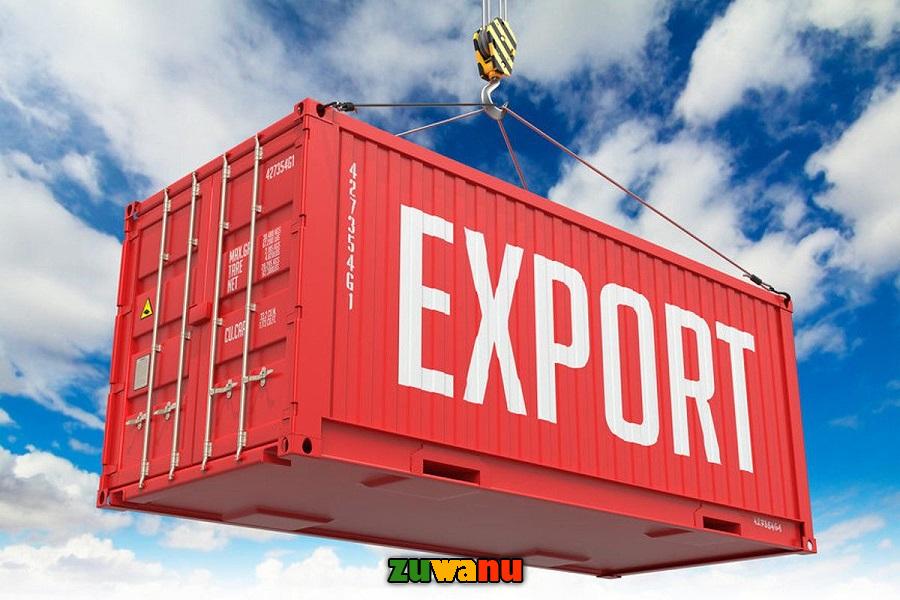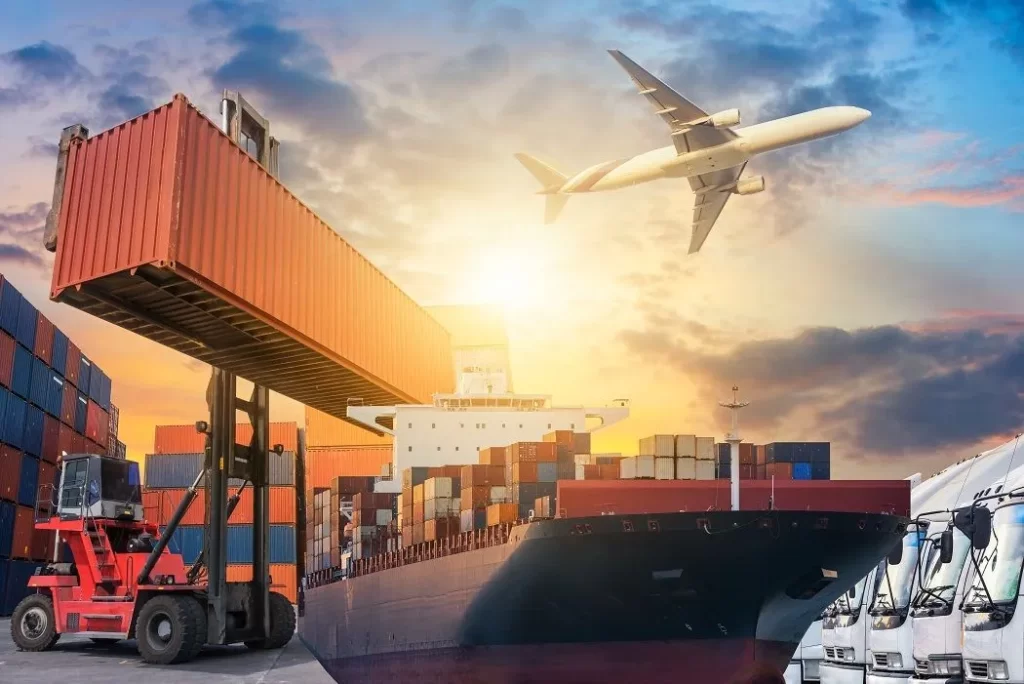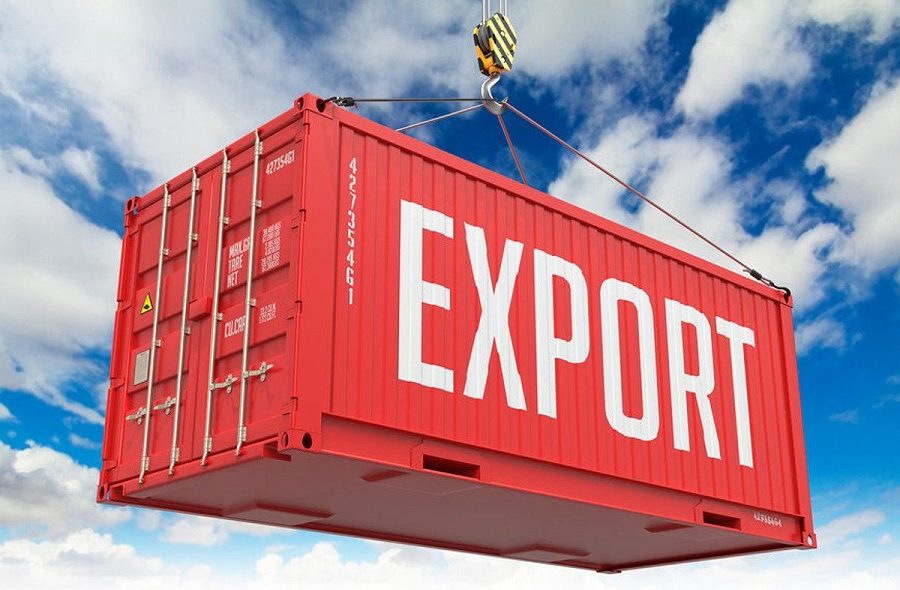Export and Import: Exploring the Dynamics, Types, Pros, and Cons
Introduction

Export and import are fundamental components of international trade, playing a pivotal role in the global economy. These activities are instrumental in connecting nations, promoting economic growth, and enhancing cultural exchange. In this comprehensive article, we will delve into the intricate world of exportation and importation, exploring their various types, as well as the advantages and disadvantages associated with these processes.
I. Understanding Exportation
Exportation, in the context of international trade, refers to the sale and transportation of goods or services from one country to another. This process allows a country to capitalize on its surplus production, expand its market reach, and ultimately enhance its economic prosperity. Exportation can take various forms, including the export of physical goods, services, and even intellectual property.
A. Types of Exports
- Physical Goods:
- Tangible products like machinery, automobiles, electronics, textiles, and agricultural produce.
- These goods are transported across borders to foreign markets.
- Exports of physical goods often contribute significantly to a country’s GDP.
- Services:
- Exporting services entails offering expertise, skills, or intangible offerings to foreign clients.
- Common examples include consulting services, financial services, IT services, and educational services.
- The global services trade has grown substantially in recent years.
- Intellectual Property:
- Exporting intellectual property involves licensing or selling patents, copyrights, trademarks, and other intangible assets to foreign entities.
- This can generate revenue and foster innovation in both the source and recipient countries.

B. Advantages of Exportation
- Economic Growth:
- Exporting allows a country to tap into external markets, thus expanding its customer base.
- This growth in demand can stimulate domestic production and create job opportunities.
- Increased exports often contribute to higher GDP and overall economic growth.
- Diversification:
- Exporting diversifies a country’s sources of revenue, reducing its dependence on domestic consumption.
- This diversification can help mitigate economic risks during domestic economic downturns.
- Foreign Exchange Earnings:
- Exports earn foreign exchange, which can be used to pay for imports, reduce trade deficits, or build foreign exchange reserves.
- A healthy balance of trade can stabilize a country’s currency and maintain its economic stability.
- Technological Advancements:
- Exporting fosters technological advancements and innovation, as companies strive to meet global standards and compete on the international stage.
- International competition can drive businesses to innovate and improve their products and services.
- Cultural Exchange:
- Exportation facilitates cultural exchange by introducing foreign consumers to a country’s products and services.
- This can lead to a better understanding of different cultures and foster international goodwill.
- Enhanced Product Quality:
- Export-oriented companies often adhere to higher quality standards to meet the requirements of international markets.
- This, in turn, can lead to improved product quality for domestic consumers.
Sultan of Brunei cars: The Enigmatic Custodian of the World’s Most Staggering Car Collection
C. Disadvantages of Exportation
- Market Risks:
- Relying heavily on exports can make a country vulnerable to fluctuations in international demand and economic conditions.
- An economic downturn in a major trading partner can have severe consequences.
- Environmental Impact:
- Excessive exports may lead to overexploitation of natural resources, environmental degradation, and carbon emissions from transportation.
- Environmental concerns are increasingly relevant in the context of international trade.
- Dependency on External Markets:
- Exports can make a country overly dependent on external markets, leaving its economy exposed to global economic fluctuations.
- Economic crises in destination countries can disrupt a nation’s export revenue.
- Competition:
- International competition can be fierce, and local businesses might struggle to compete with global players.
- Lower-cost foreign goods can displace domestic products, affecting local industries.
- Trade Barriers:
- Trade barriers such as tariffs, quotas, and non-tariff barriers can impede the growth of exports.
- Negotiating favorable trade agreements is essential to overcome these hurdles.
II. Understanding Importation
Importation, on the other hand, involves the purchase and reception of foreign goods and services by a country. This process allows nations to access products and services that may not be readily available or cost-effective to produce domestically. Importation is an essential aspect of international trade, playing a vital role in consumer choice, economic development, and global market integration.
A. Types of Imports
- Physical Goods:
- Importation of tangible products like machinery, raw materials, consumer goods, and technology.
- These goods are procured from international markets to fulfill domestic demand.
- Services:
- Importing services includes availing foreign expertise, skills, or intangible services.
- Common examples include outsourcing customer support, importing consulting services, and seeking educational services abroad.
- Intellectual Property:
- Importing intellectual property involves licensing or purchasing foreign patents, copyrights, and trademarks.
- This can enable domestic companies to access innovative ideas and technologies.
B. Advantages of Importation
- Consumer Choice:
- Importation offers consumers a wider array of products and services, allowing them to choose from a global selection.
- This fosters diversity and competition in the domestic market.
- Access to Technology:
- Importing technology and innovative products allows a country to leapfrog in terms of development and economic growth.
- Access to foreign expertise can accelerate domestic technological advancements.
- Cost Savings:
- Importing often leads to cost savings, as countries can acquire products and materials more affordably from international markets.
- This cost-effectiveness benefits consumers and businesses alike.
- Economic Development:
- Importing raw materials and intermediate goods can stimulate domestic production and industrialization.
- A well-structured import strategy can contribute to economic development.
- Filling Gaps in Supply:
- Importation is crucial for filling supply gaps, especially when a country lacks the capacity to produce certain goods or services.
- It ensures that essential products are readily available to consumers.
- Trade Diplomacy:
- Engaging in importation can foster positive diplomatic relations with trading partners.
- It encourages cooperation and collaboration between countries.
C. Disadvantages of Importation
- Trade Deficits:
- Heavy reliance on imports can result in trade deficits, where a country spends more on imports than it earns from exports.
- Persistent trade deficits can lead to economic imbalances.
- Economic Vulnerability:
- Excessive importation can make a country vulnerable to supply disruptions, geopolitical tensions, and fluctuations in exchange rates.
- Overreliance on foreign goods can pose economic risks.
- Loss of Domestic Production:
- Importing certain products may lead to a decline in domestic production, affecting local industries and employment.
- Over time, this can erode a nation’s self-sufficiency.
- Intellectual Property Concerns:
- Importing intellectual property may raise concerns about copyright infringement and intellectual property rights.
- Safeguarding the rights of foreign creators is essential.
III. The Global Trade Landscape
International trade is a complex web of interactions, shaped by a myriad of factors, including trade agreements, economic policies, geopolitical considerations, and market dynamics. Understanding the broader landscape is crucial for comprehending the nuances of exportation and importation.
A. Trade Agreements
- Bilateral Agreements:
- Bilateral trade agreements are made between two countries to facilitate the exchange of goods and services.
- These agreements can lead to preferential trade conditions, such as reduced tariffs.
- Regional Trade Agreements:
- Regional trade agreements involve multiple countries in a specific geographic region.
- Examples include the European Union, the North American Free Trade Agreement (NAFTA), and the Association of Southeast Asian Nations (ASEAN).
- Multilateral Agreements:
- Multilateral trade agreements involve many countries and are often governed by international organizations.
- The World Trade Organization (WTO) is a key entity in the negotiation and enforcement of multilateral trade agreements.
B. Trade Policies
- Protectionism:
- Protectionist policies involve the imposition of trade barriers like tariffs, quotas, and subsidies to protect domestic industries.
- These policies can hinder imports and promote domestic production but may also lead to trade tensions.
- Free Trade:
- Free trade policies advocate for minimal trade restrictions, emphasizing the benefits of open markets, competition, and consumer choice.
- Free trade agreements aim to reduce barriers to trade.
C. Economic Considerations
- Balance of Trade:
- The balance of trade refers to the difference between a country’s exports and imports.
- A trade surplus occurs when exports exceed imports, while a trade deficit results from higher imports than exports.
- Exchange Rates:
- Exchange rates influence the relative costs of imports and exports.
- Currency values impact a country’s trade competitiveness and trade balance.
D. Geopolitical Factors
- Political Relations:
- Geopolitical relations between countries can influence trade agreements, tariffs, and market access.
- Political tensions can disrupt trade flows.
- Regional Conflicts:
- Regional conflicts can disrupt trade routes and access to key markets.
- The stability of regions and trade corridors is crucial for global trade.
IV. The Pros and Cons of a Balanced Trade Approach
To assess the overall impact of exportation and importation on a country’s economy, it’s important to consider a balanced trade approach. A balanced trade approach seeks to optimize the benefits of both export and import activities, taking into account the unique characteristics and demands of a nation’s economy.
A. The Pros of a Balanced Trade Approach
- Economic Stability:
- A balanced trade approach can help maintain economic stability by avoiding extreme trade imbalances.
- It reduces the risk of currency devaluation and inflation.
- Diverse Revenue Streams:
- Balancing exports and imports ensures that a country has multiple revenue streams.
- This diversification can act as a buffer during economic downturns.
- Technological Growth:
- A balanced trade approach encourages technological growth through international competition and cooperation.
- It promotes innovation and knowledge sharing.
- Sustainable Development:
- By considering the environmental impact, a balanced trade approach can contribute to sustainable development.
- It encourages responsible production and consumption.
- Job Creation:
- A well-structured approach can create jobs in both the export and import sectors.
- This benefits the labor force and reduces unemployment.
B. The Cons of a Balanced Trade Approach
- Complexity:
- Achieving a balanced trade approach can be complex and challenging, given the dynamic nature of international trade.
- It requires constant monitoring and adjustment.
- Economic Diversification:
- A balanced approach may limit a country’s capacity to focus on specialized industries that could become global leaders.
- Economic diversification can be a double-edged sword.
- Negotiation and Diplomacy:
- Balancing exports and imports requires effective negotiation and diplomacy to secure favorable trade agreements.
- International relations play a pivotal role in this process.
- Resource Allocation:
- Resource allocation can be a challenging aspect of a balanced trade approach, as countries need to determine which sectors to prioritize.
- Making these choices can be politically sensitive.
V. Case Studies
To illustrate the dynamics of exportation and importation, we can examine a few real-world case studies that highlight the impact and challenges of these processes.
A. China’s Export-Led Growth
China’s rapid economic growth in recent decades has largely been driven by its export-oriented strategy. The country has become the world’s largest exporter of goods, with a focus on manufacturing and technology. China’s exports range from electronics and machinery to textiles and consumer goods. This export-driven growth has led to a substantial increase in GDP, job creation, and technological advancement. However, it has also generated concerns related to trade imbalances, environmental pollution, and human rights issues.
B. Germany’s Export Strength
Germany is known for its strong export-oriented economy, particularly in industries like automotive manufacturing and machinery. The country’s exports have contributed significantly to its economic success. Germany’s export prowess has resulted in trade surpluses, foreign exchange earnings, and economic stability. On the downside, this approach has made the German economy sensitive to external shocks and fluctuations in global demand.
C. Japan’s Import-Dependent Model
Japan’s economy is heavily reliant on imports due to limited natural resources. The country’s importation of raw materials, energy, and food is crucial to sustaining its industrial and technological sectors. Japan has achieved technological growth and economic development through a combination of domestic innovation and strategic importation. However, this dependence on imports has made the country susceptible to supply disruptions and exchange rate fluctuations.
VI. The Future of Export and Import
The landscape of exportation and importation is continually evolving, driven by technological advancements, economic shifts, and global challenges. To forecast the future of these processes, we must consider several key trends and developments.
A. Digitalization and E-Commerce
The digital revolution has transformed international trade. E-commerce has made it easier for small and medium-sized enterprises (SMEs) to engage in international trade. Online marketplaces, global payment systems, and digital marketing have reduced barriers to entry for businesses looking to export their products or services. This trend is expected to continue, making international trade more accessible and efficient.
B. Sustainability and Responsible Trade
Sustainability and responsible trade are gaining prominence in the global marketplace. Countries and businesses are increasingly focusing on environmentally friendly practices, ethical sourcing, and fair trade. Consumers are more conscious of the environmental and social impact of the products they purchase. This will likely lead to greater scrutiny of supply chains and a shift toward more sustainable production and consumption.
C. Supply Chain Resilience
The COVID-19 pandemic exposed vulnerabilities in global supply chains, prompting a reassessment of supply chain resilience. Countries and businesses are looking to diversify supply sources, reduce dependence on single suppliers or regions, and enhance the agility of their supply chains. This shift may lead to changes in trade patterns and the development of new trade corridors.
D. Trade Digitization and Blockchain
Trade digitization and blockchain technology have the potential to streamline trade processes, reduce fraud, and enhance transparency. Smart contracts and blockchain-based trade platforms can facilitate secure and efficient international trade transactions. As these technologies mature, they may reshape the way goods and services are exported and imported.
E. Geopolitical Shifts
Geopolitical tensions and conflicts can significantly impact international trade. Trade relations may be influenced by shifts in global power dynamics, trade alliances, and diplomatic relations. The outcome of trade negotiations and agreements will continue to be influenced by geopolitical considerations.
F. Pandemics and Global Health
Global health crises, like the COVID-19 pandemic, have the potential to disrupt international trade by affecting supply chains, travel, and market demand. These events may lead to
increased emphasis on risk management and the development of more resilient trade systems.
Conclusion
Exportation and importation are fundamental aspects of international trade that have profound implications for countries’ economic growth, consumer choice, and global connectivity. The types, advantages, and disadvantages associated with these processes underscore the complexities and challenges involved. Achieving a balanced trade approach is key to optimizing the benefits of both exports and imports, and it requires careful economic planning, negotiation, and diplomacy.
The global trade landscape is evolving rapidly, with digitalization, sustainability, and supply chain resilience emerging as significant trends. As countries and businesses adapt to these changes, the future of exportation and importation will likely be shaped by advancements in technology, shifts in geopolitical relations, and a growing emphasis on responsible and sustainable trade practices.
In this ever-changing landscape, it is essential for policymakers, businesses, and individuals to remain vigilant and adaptable, ensuring that international trade continues to be a driving force for economic growth, innovation, and cultural exchange in the years to come.


Leave a Comment